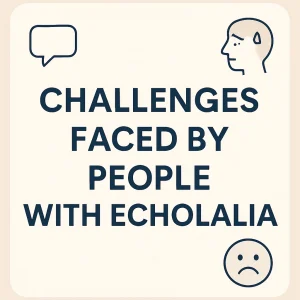Baby Talk Made Easy: Tips & Tricks for Using Parentese Effectively
By Rajini D
Last Updated: March 23, 2024
Have you ever found yourself cooing and babbling back to a baby, marveling at their gurgles and smiles in response? This instinctual exchange is more than just a heartwarming interaction; it’s the essence of “parentese,” a powerful tool in nurturing your baby’s language development. Unlike the traditional baby talk filled with cute but nonsensical words, parentese is a method of speaking to babies that enhances their ability to understand and eventually speak language themselves.
Many of us yearn for a deep connection with our little ones, longing for the day they can tell us their needs and desires or simply share their discoveries. In the early months and years of a child’s life, this communication is more about tone, expression, and the simplicity of language rather than the content of what is being said. That’s where parentese comes in – a joyful and effective way to engage with your baby, supporting their cognitive growth and laying a strong foundation for their future communication skills.
Understanding Parentese: The Basics and the Science
What Is Parentese?
Imagine speaking to your baby, and instead of using the traditional “goo-goo ga-ga,” you opt for clear, simplified language, a higher pitch, and stretched-out vowels. This is “Parentese” – a conversational style that not only fosters connection but is a catalyst for your child’s language development. Unlike baby talk, which often involves made-up words and phrases, parentese is characterized by real words, elongated vowels, and a melodious, engaging tone. It’s all about enhancing clarity and expressiveness to captivate your baby’s attention and stimulate their auditory learning.
Key Characteristics of Parentese:
- Use of Real Words: Communicating with babies using actual words helps them make correct associations for objects and emotions.
- Higher Pitch: Naturally, our voices tend to pitch up when we talk to babies, which, surprisingly, is more engaging for them.
- Elongated Vowels: Stretching out vowels makes it easier for babies to grasp the sounds that makeup language.
- Expressive Tone and Facial Expressions: Accompanying parentese with animated facial expressions enhances understanding and emotional connection.
Know more: Understanding Baby Talk: Is It Good or Bad for Child Growth?
The Science Behind Parentese
Several studies have thrown light on the effectiveness of parentese. Research conducted by speech scientists, including a notable study from the University of Washington, reveals fascinating findings:
- Enhanced Language Development: Babies engaged with parentese tend to develop a richer vocabulary and better pronunciation skills by the age of 14 months compared to their peers.
- Cognitive and Emotional Benefits: Parentese not only boosts language skills but also fosters a deeper emotional bond between parents and their children, setting a strong foundation for future learning and interaction.
- Global Phenomenon: This isn’t just a cultural practice but a universally observed phenomenon. Across the globe, parents instinctively use parentese, underscoring its natural role in human communication and development.
Also Read: Understanding Speech Chain: Key to Better Communication
Why Use Parentese? The Emotional and Developmental Boost
Benefits for Your Baby
The Power of Parentese in Vocabulary and Language Skills
When you talk to your baby in parentese, you’re not just filling the air with sweet nothings. You’re laying the groundwork for robust vocabulary and language skills that will serve them well throughout their life. Speaking in parentese involves using real words, clear pronunciation, and a melodious tone, making it easier for your baby to grasp the sounds and structure of language. Studies have shown that babies exposed to parentese regularly develop a larger vocabulary by the time they reach their toddler years. It’s like giving your child a head start in the marathon of language learning.
Building Emotional Bonds Through Parentese
But parentese isn’t all about syntax and semantics. It’s also about the smile in your voice, the sparkle in your eyes, and the love that radiates with every exaggerated vowel. This form of communication is rich in emotional content, helping to strengthen the bond between you and your baby. It turns ordinary moments into opportunities for connection and understanding, laying a foundation of trust and affection that lasts a lifetime.
You, The First and Most Influential Teacher
As a parent, you play the most pivotal role in your child’s early development. Your interactions, especially through parentese, set the stage for your baby’s future learning and communication skills. By embracing your role as your child’s first teacher, you’re not only helping them pick up language faster but also showing them the joy of learning and communication. Every coo, every elongated vowel, and every sing-song phrase you share is a lesson in love and language.
In this vital role, you’re not alone. Wellness Hub is here to support you with resources, tips, and insights to enhance your parenting journey. Whether it’s understanding the nuances of parentese or finding ways to integrate learning into everyday moments, our community and content are designed to empower you as you guide your child through these formative years.
Practical Tips for Using Parentese: Enhancing Your Baby’s Language Journey
Embracing parentese can be a joyful and enriching experience for both you and your baby. Here are some practical tips and examples to help you weave parentese into your daily routines, turning everyday moments into opportunities for learning and bonding.
Getting Started with Parentese
- Be Mindful of Your Tone: Start by adopting a higher pitch and a sing-song quality in your voice. This doesn’t mean you need to sound like a cartoon character, but a gentle, uplifting tone can be more engaging for your baby.
- Simplify Your Language, Not Your Content: Use real words and complete sentences, but keep them short and sweet. For instance, instead of saying, “Look at that,” you might say, “Look at the beautiful, big dog!”
- Emphasize Key Words: Slow down when you say important words, elongating the vowels. This helps your baby to grasp and eventually mimic these sounds.
- Use Expressive Facial Expressions: Your face can convey a wealth of information, so smile, widen your eyes, and animate your expressions as you talk.
Incorporating Parentese into Daily Activities
- During Diaper Changes: “Let’s change your diaper! Oh, what a clean diaper! So soft!” This routine task becomes a dialogue filled with new words and expressions for your baby.
- At Mealtime: “It’s time to eat! Here comes a spoonful of yummy, warm soup!” Mealtime offers a rich context for introducing new vocabulary and concepts like “hot,” “cold,” “more,” or “all done.”
- While Dressing: “Let’s put on your blue shirt. Over your head, it goes! Now, let’s grab your cozy socks.” Dressing is an excellent opportunity to talk about colors, body parts, and clothing items.
Read more: 12 Activities to Boost Kids Speech & Language
Reading and Parentese
Reading to your baby is a fantastic way to practice parentese while instilling a love for books from an early age.
- Choose Bright and Simple Books: Select books with vibrant pictures and simple, rhythmic texts to capture your baby’s attention.
- Point and Describe: As you read, point to pictures and describe them using parentese. “Look at the red ball! It’s so round and bouncy!”
- React and Engage: Show excitement about the story and its characters. Ask questions even if your baby can’t respond yet. “Do you see the kitty? Where’s the kitty?”
- Emphasize Facial Expressions: Your expressions add an extra layer of meaning to the words. They help your baby understand and feel the emotions related to the story.
By incorporating these tips into your daily routine, you create a language-rich environment that not only supports your baby’s linguistic development but also deepens your bond. Parentese is more than just a way of talking; it’s an expression of love and a bridge to understanding.
Practical Tips for Implementing Parentese
| Activity | Tips for Using Parentese | Example Phrases |
|---|---|---|
| Feeding Time | Speak slowly and clearly, describing the process and foods. | “Now we’re eating yummy carrots. Mmm, so good!” |
| Diaper Changing | Use simple sentences to narrate your actions. Exaggerate emotional expressions. | “Let’s get you clean and comfy! Here we go!” |
| Reading Together | Point to and name objects. Ask questions even if they can’t answer yet. | “See the dog? What does the dog say? Woof-woof!” |
| Playtime | Comment on their play, mirror their excitement, and describe their actions and toys. | “You’re building so high! Up, up, up goes the block!” |
| Going for a Walk | Talk about what you see, hear, and feel. Use a lot of descriptive words. | “Look at the big, green tree! Hear the birdies singing?” |
Engaging with Your Baby: Beyond Words
Communication with your baby transcends spoken language. It involves a dance of gestures, expressions, and mutual understanding that builds a deep bond between you. Mastering this dance is crucial for nurturing your baby’s language and emotional development.
The Importance of Listening and Responding
Listening to your baby’s coos, cries, and attempts at babble is the first step in a lifelong conversation. Every sound they make is an attempt to communicate, and your attentive response teaches them the power and purpose of interaction. By acknowledging their efforts to communicate, you validate their feelings and encourage them to continue exploring the sounds and rhythms of speech.
Responding in kind, whether through parentese, mimicking their sounds, or simply smiling and nodding, reinforces the idea that communication is a two-way street. This interaction is the foundation of language learning, as it introduces the concept of dialogue. Your baby learns that sounds have meaning and that they can use these sounds to express needs, desires, and emotions.
Facial Expressions and Body Language
The nuances of communication with your baby also heavily rely on non-verbal cues. Your facial expressions, gestures, and body language all play a significant role in reinforcing the words you speak in parentese. Smiling, making eye contact, and using animated expressions not only make the conversation more engaging for your baby but also teach them to read and respond to emotional cues.
These non-verbal interactions are vital for emotional regulation and social learning. They help your baby understand the world around them, equipping them with the skills to navigate social interactions as they grow. By using expressive gestures and facial expressions, you’re not just communicating; you’re teaching your baby the language of empathy, connection, and human emotion.
Comparing Parentese, Baby Talk, and Standard Speech
| Feature | Parentese | Baby Talk | Standard Speech |
|---|---|---|---|
| Word Use | Real Words | Simplified Words or Sounds | Complex Vocabulary |
| Grammar | Correct Grammar | Simplified or Incorrect Grammar | Correct Grammar |
| Pitch | High Pitch | Varies, often higher | Normal Pitch |
| Emotional Expression | High Emotional Expression | High Emotional Expression | Moderate to Low Emotional Expression |
| Language Development Impact | Positive Impact on Language Development | Limited Impact on Language Development | Less Direct Impact on Early Language Development |
Addressing Common Concerns and Misconceptions about Parentese
When embarking on the journey of using parentese to communicate with your baby, it’s natural to encounter questions and perhaps a few doubts. Let’s address some of the most common concerns and misconceptions to ensure you feel confident and informed.
When to Transition from Parentese to Normal Speech
One of the most frequent questions from parents is about timing. Specifically, when should you start transitioning from parentese to more standard forms of speech? The answer lies in observing your child’s development. As your baby grows and begins to mimic words and form basic sentences—usually around the age of two—it’s a good indicator that they’re ready for more complex language structures. However, this doesn’t mean you should abruptly stop using parentese. Instead, gradually introduce normal speech patterns while maintaining the engaging, emotive tone that characterizes parentese.
Parentese vs. Baby Talk: Clearing the Air
Another common area of confusion is the distinction between parentese and baby talk. While often used interchangeably in casual conversation, they’re not the same. Baby talk typically involves using made-up words or overly simplistic language that doesn’t necessarily follow the rules of grammar. Parentese, on the other hand, relies on real words and correct grammatical structures delivered in a melodious and exaggerated manner. The key difference? Parentese is designed to aid language development by providing clear examples of language use, whereas baby talk is more about emotional connection and may not offer the same cognitive benefits.
Embracing Parentese with Confidence
Understanding these key points can help dispel any hesitations you might have about using parentese. Remember, your instinct to connect and communicate with your baby through parentese comes from a place of love and a desire to foster their development. Trust in the natural process, and know that you’re contributing positively to your child’s future communication skills.
Read more: What is the Relation between Communication, Speech and Language?
Incorporating Wellness Hub into Your Parenting Journey
As we’ve navigated the nuances of parentese together, from understanding its definition to exploring practical tips and addressing common concerns, it’s evident that fostering your baby’s language development is a journey filled with love, learning, and laughter. It’s a path that, while rewarding, can also be filled with questions and a need for support. That’s where Wellness Hub steps in.
Wellness Hub is more than just a website; it’s a community dedicated to supporting parents like you on every step of their parenting journey. We understand the importance of early language development and the role it plays in your child’s future success. That’s why we’re committed to providing you with a wealth of information and resources that cater specifically to nurturing this aspect of your child’s growth.
Incorporating Wellness Hub into your journey means having a partner in your quest to enrich your baby’s language development. It means having a place to turn to when you’re looking for tips to enhance your use of parentese, when you’re curious about the next steps in your child’s linguistic journey, or when you simply need reassurance that you’re on the right track.
Conclusion
As we conclude our exploration of parentese, it’s evident that this engaging form of communication does more than just build linguistic skills in infants; it forges deeper connections between parent and child. Adopting parentese enriches your baby’s early experiences with language, laying a solid foundation for their future communication abilities. Through the highs and lows of each pitch and the warmth behind every exaggerated vowel, parentese acts as a catalyst for cognitive development and emotional bonding. The strategies and insights shared here are your toolkit, designed to transform everyday moments into opportunities for growth, learning, and connection.
We invite you to embrace the journey of parentese with open arms and an open heart. Let each coo, giggle, and babble strengthen the bond with your baby and guide them through their language learning journey. At Wellness Hub, we stand ready to support you with resources, advice, and a community that understands the transformative power of mindful communication. Remember, the essence of parentese lies not only in words but in the love and intention behind them, making every interaction a step toward a future rich in dialogue and understanding.
Frequently Asked Questions:
1. What is parentese and how does it differ from baby talk?
Parentese is a form of communication with babies that involves using real words spoken in a higher pitch, with elongated vowels and expressive tones. Unlike traditional baby talk, which often includes made-up words and sounds, parentese is structured to support language learning and development.
2. At what age should I start using parentese with my baby?
You can start using parentese from the moment your baby is born. Early exposure to parentese has been shown to support language development and strengthen the parent-child bond.
3. How does parentese benefit my baby’s development?
Parentese helps in enhancing your baby’s vocabulary, improving their ability to understand and use language, and fostering emotional connections. It encourages more frequent and meaningful interactions, which are crucial for cognitive and social development.
4. Can using parentese make it harder for my child to learn proper language later on?
No, parentese actually supports proper language development. By using real words and correct grammar in an engaging and clear manner, parentese provides a strong foundation for your child’s future language skills.
5. How long should I continue to use parentese with my child?
While there’s no strict age limit, it’s generally recommended to gradually transition to more complex language as your child’s comprehension and speech skills develop, usually around age two. However, maintaining the engaging and responsive aspects of parentese can benefit children well beyond infancy.
6. Are there specific times or activities where parentese is most effective?
Parentese is beneficial during any interaction with your baby, but it can be particularly effective during routine activities like feeding, diaper changing, and reading. These moments provide opportunities for close interaction and the use of relevant vocabulary.
7. How can I incorporate parentese into reading time with my baby?
While reading to your baby, use a high-pitched, sing-song voice to emphasize keywords and make the story engaging. Point to and name objects in the book, and use facial expressions to convey emotions and actions in the story.
8. Will my baby still learn to understand non-parentese speech if I use parentese all the time?
Yes, using parentese doesn’t prevent your baby from understanding non-parentese speech. In fact, parentese helps build a strong foundation for language comprehension. As babies grow, they naturally adapt to various speech patterns and tones they hear in their environment.
9. Is parentese effective for all babies, including those with developmental delays?
Parentese can be beneficial for all babies, including those with developmental delays. It can particularly aid in engaging children at their level of understanding and encouraging language development. However, it’s important to also follow any specific guidance from healthcare or developmental professionals tailored to your child’s needs.
10. Can both parents and other caregivers use parentese effectively?
Absolutely, parentese is effective regardless of who uses it. Whether it’s parents, grandparents, siblings, or childcare providers, what matters most is the engaging, expressive, and clear manner of communication. Consistent use of parentese by various caregivers can reinforce language development and provide a rich linguistic environment for the child.
About the Author:
Rajini Darugupally
M.Sc., Speech-Language Pathologist (9+ years of experience)
Rajini is a passionate and dedicated Speech-Language Pathologist with over 9+ years of experience, specializing in both developmental speech and language disorders in children and rehabilitation in adults. Driven by a desire to empower each individual to find their voice, Rajini brings a wealth of experience and a warm, genuine approach to therapy.
Currently, at Wellness Hub, she thrives in a team environment that values innovation, compassion, and achieving results for their clients.
Connect with Rajini to learn more about how she can help you or your loved one find their voice.
Book your Free Consultation Today
Parent/Caregiver Info:
Client’s Details:
* Error Message









